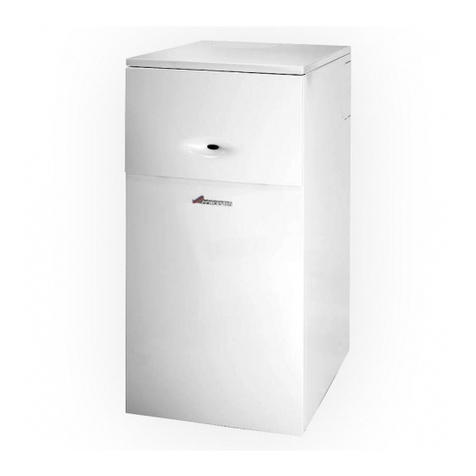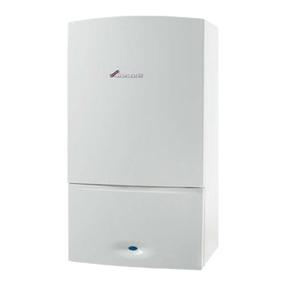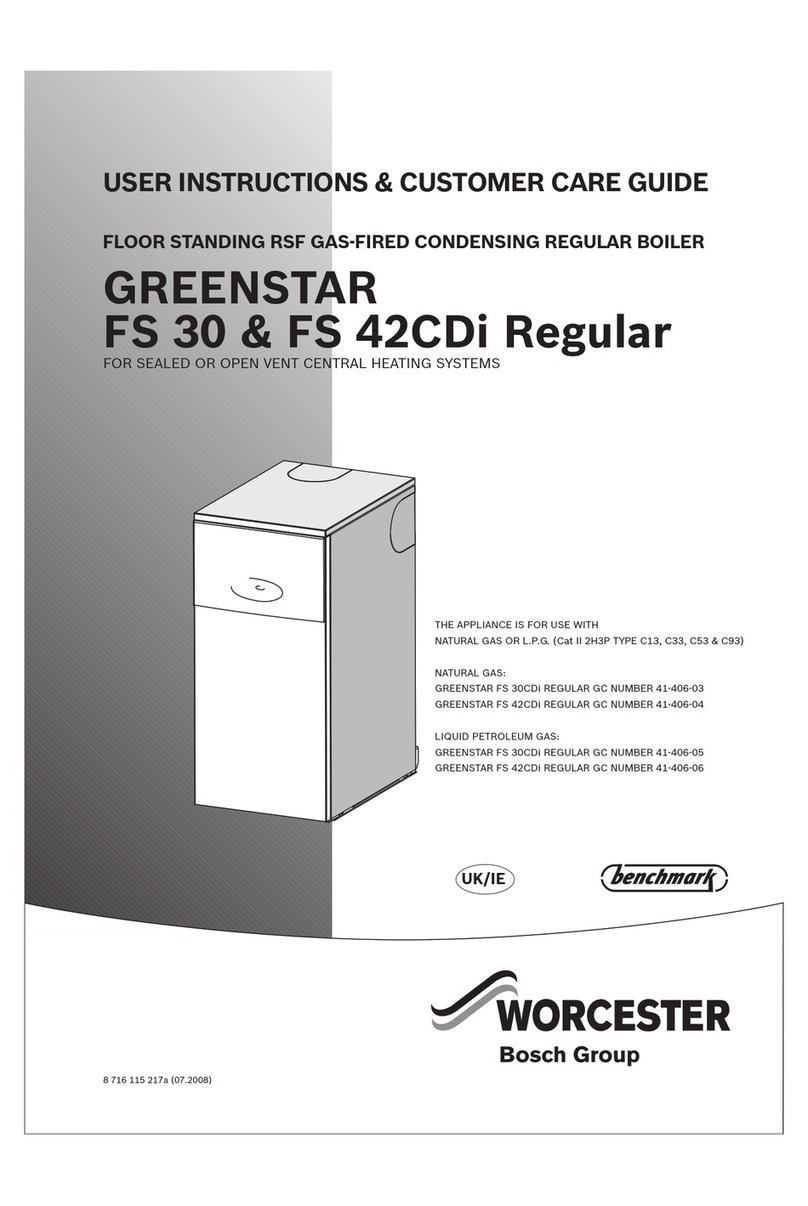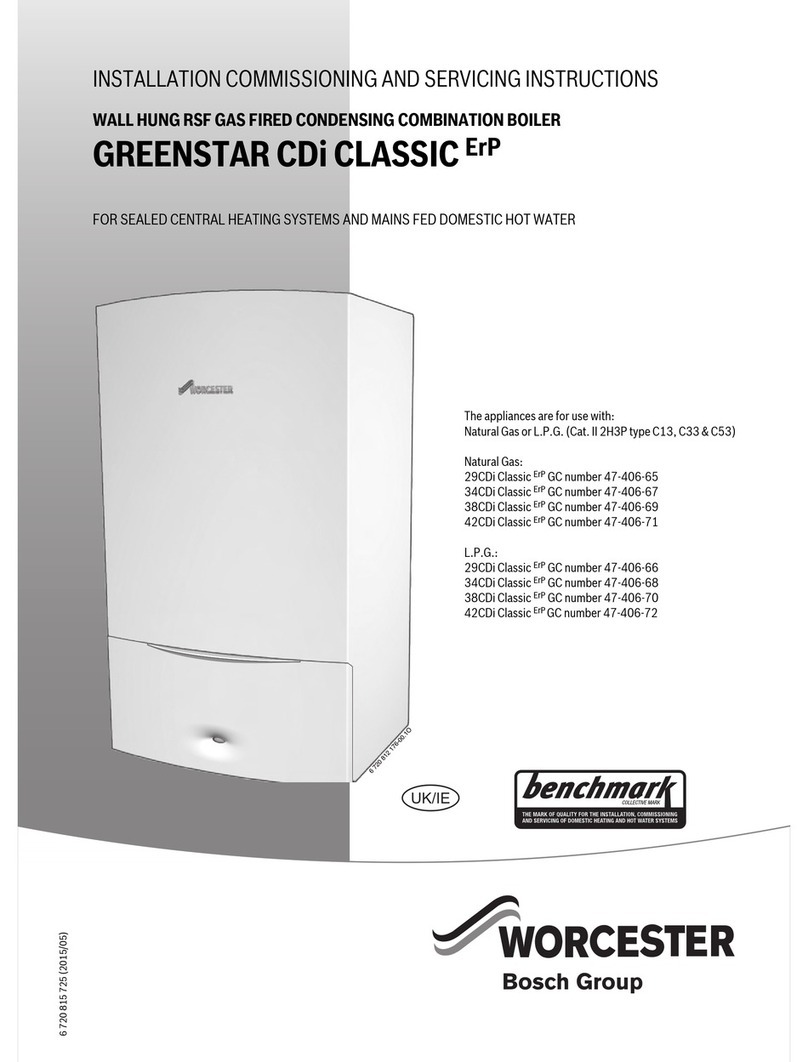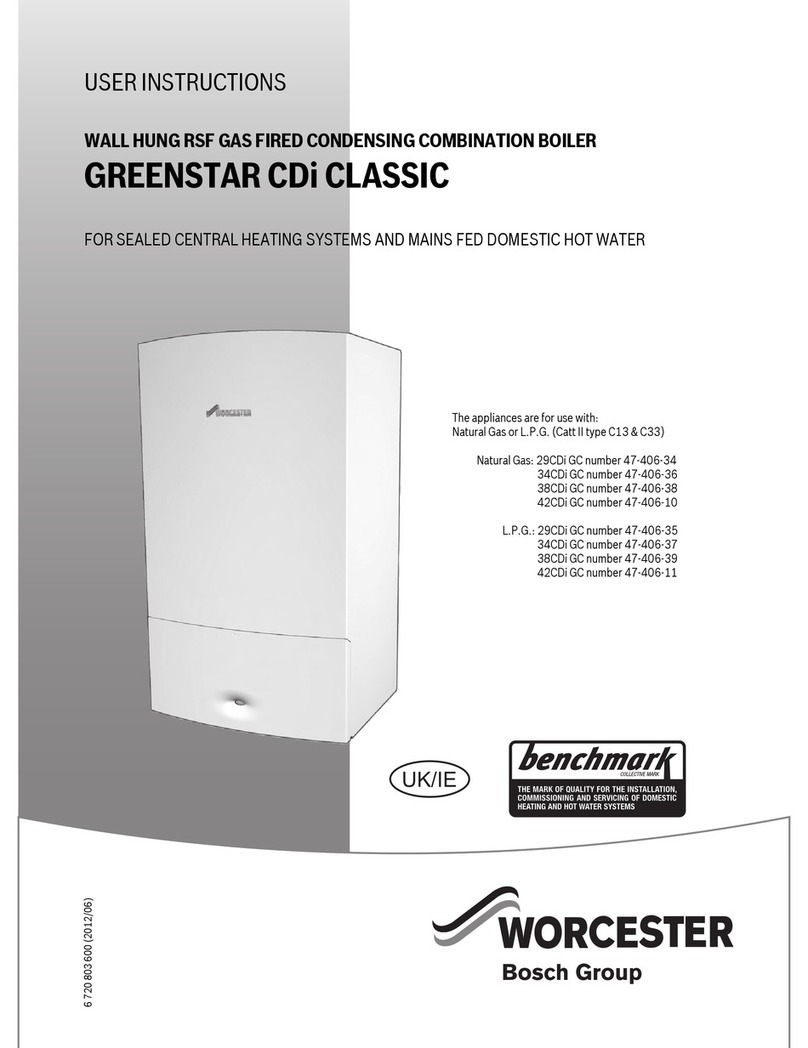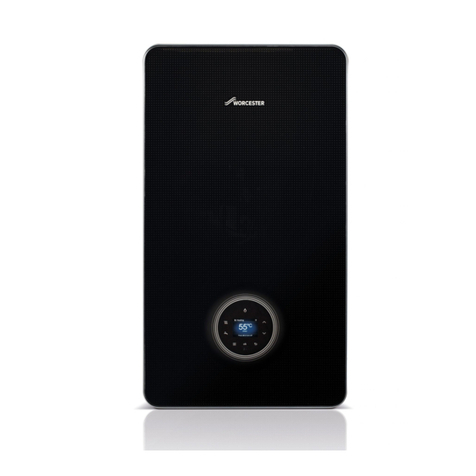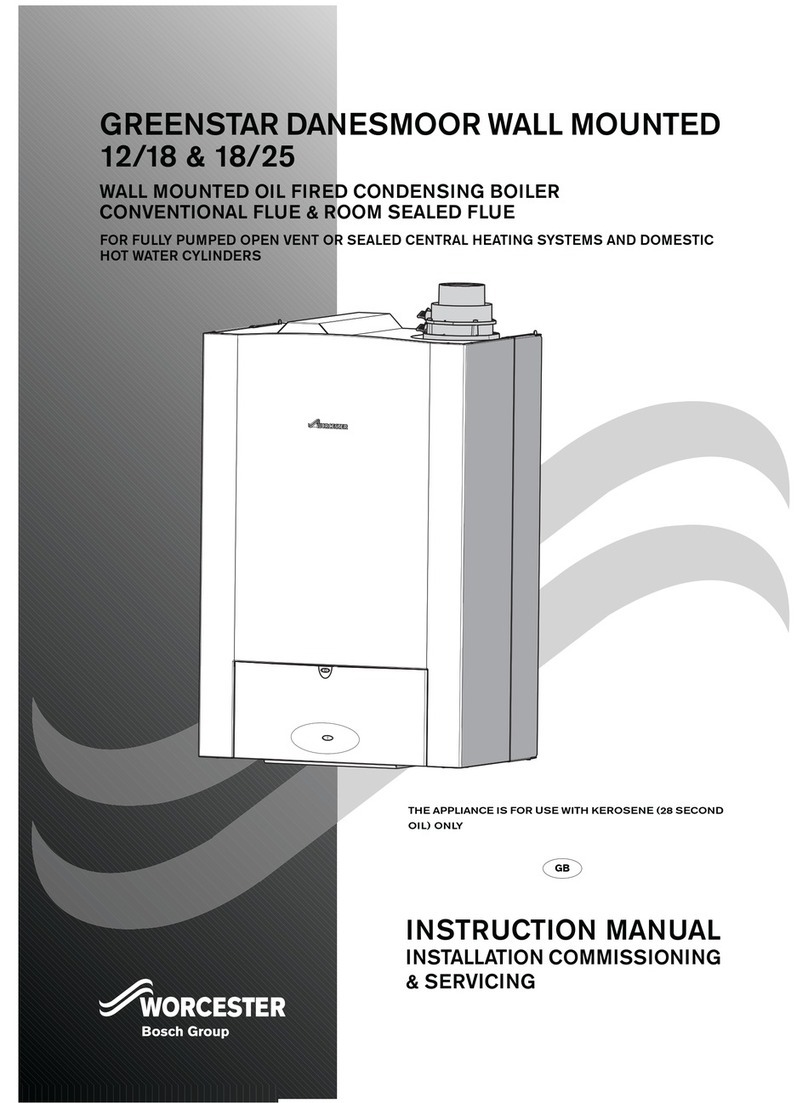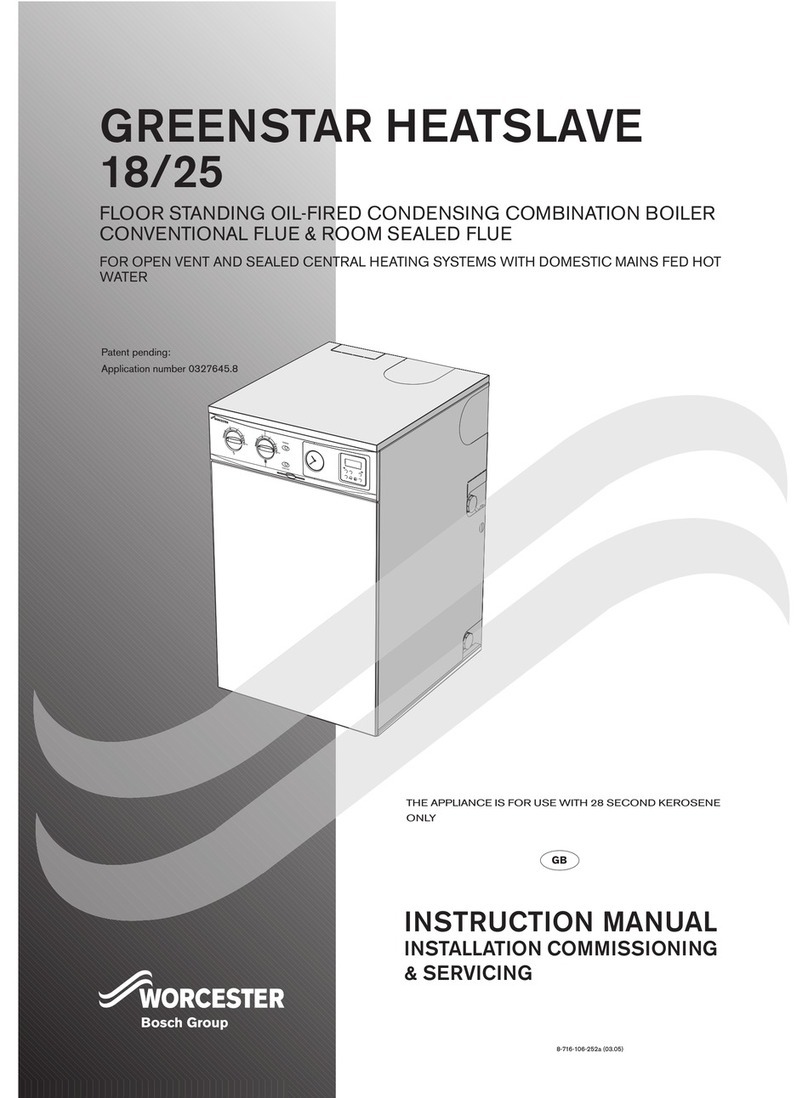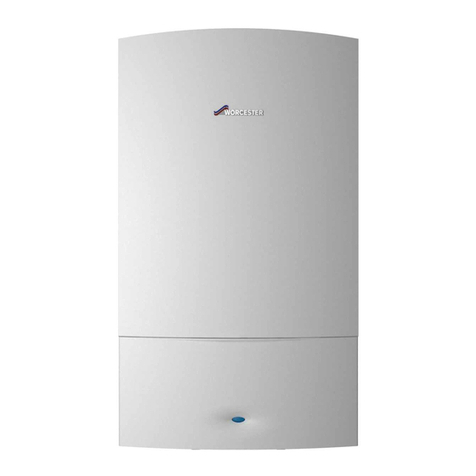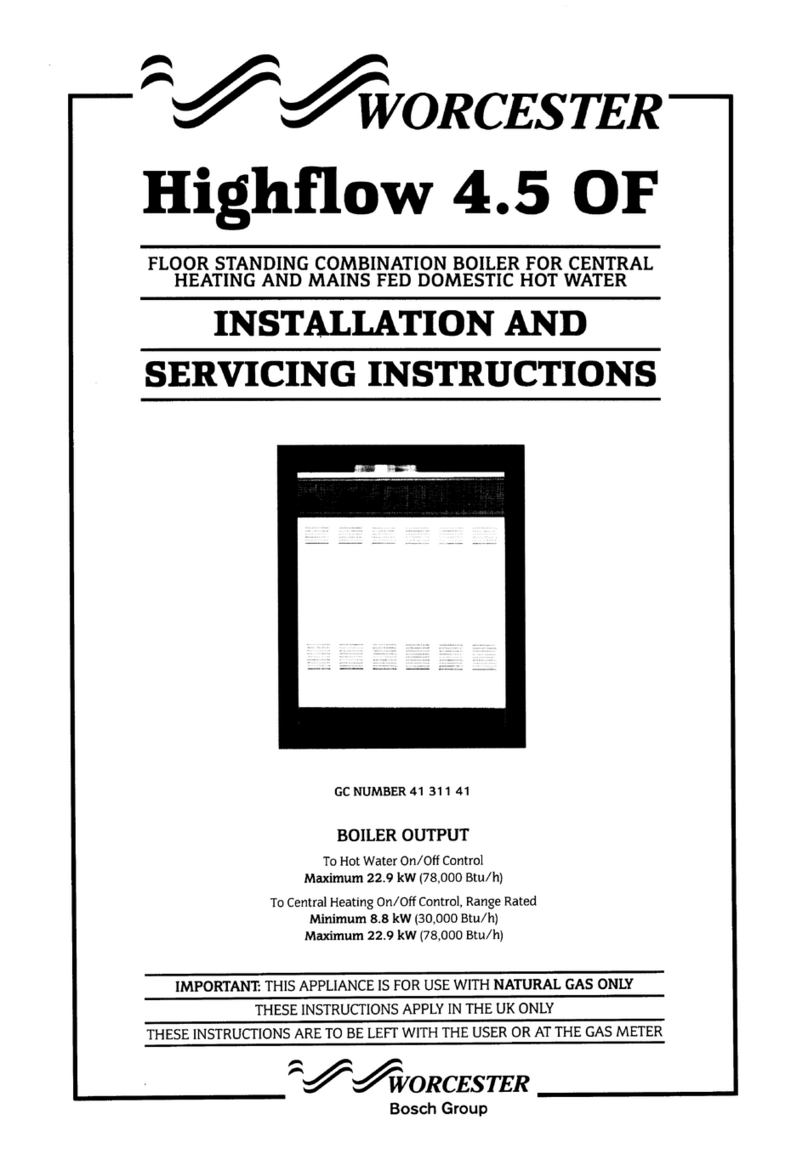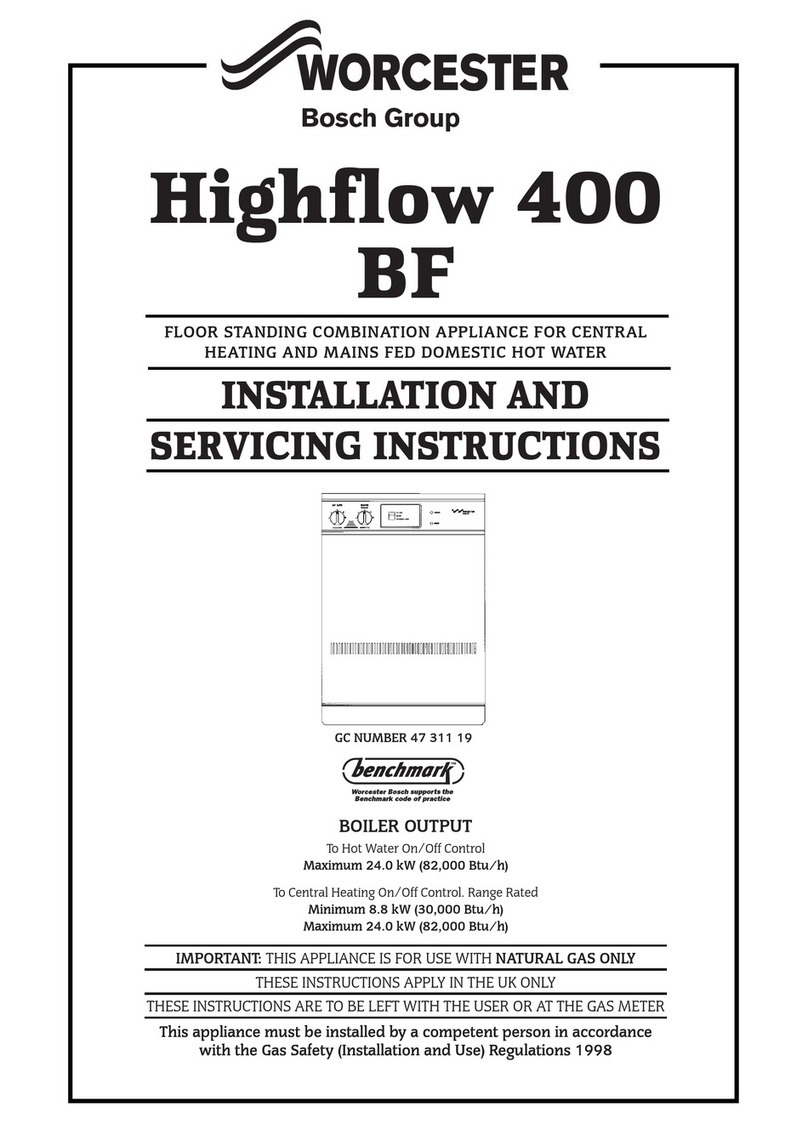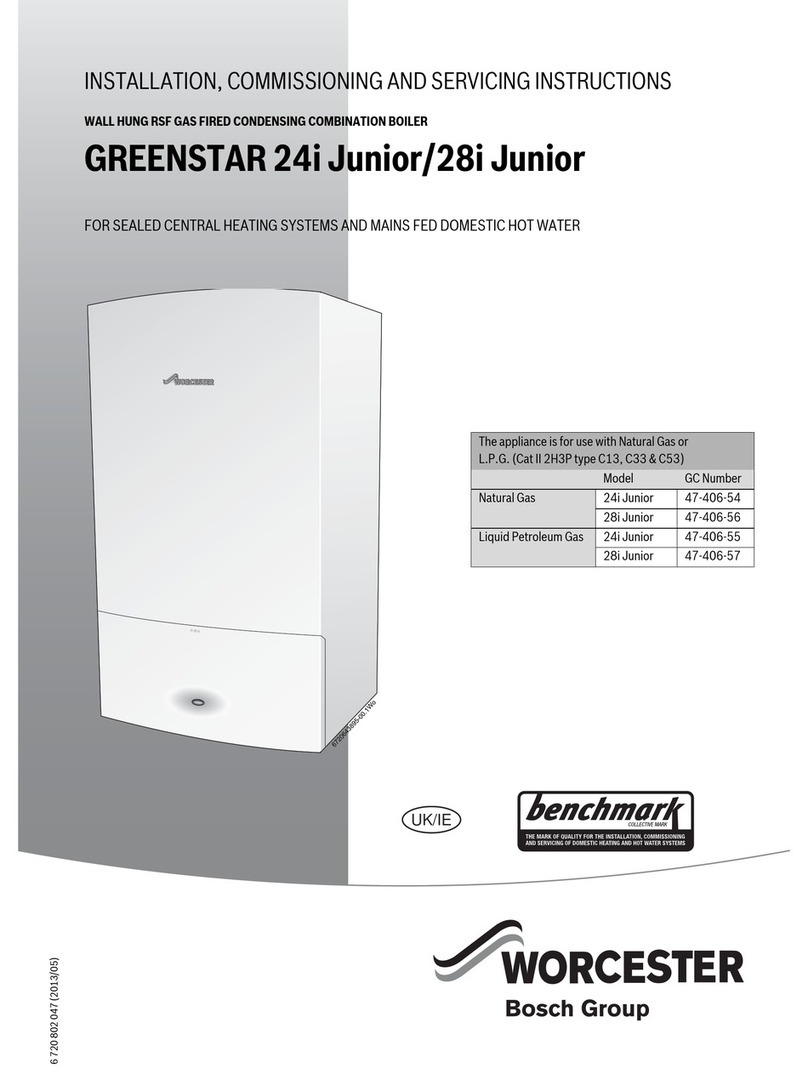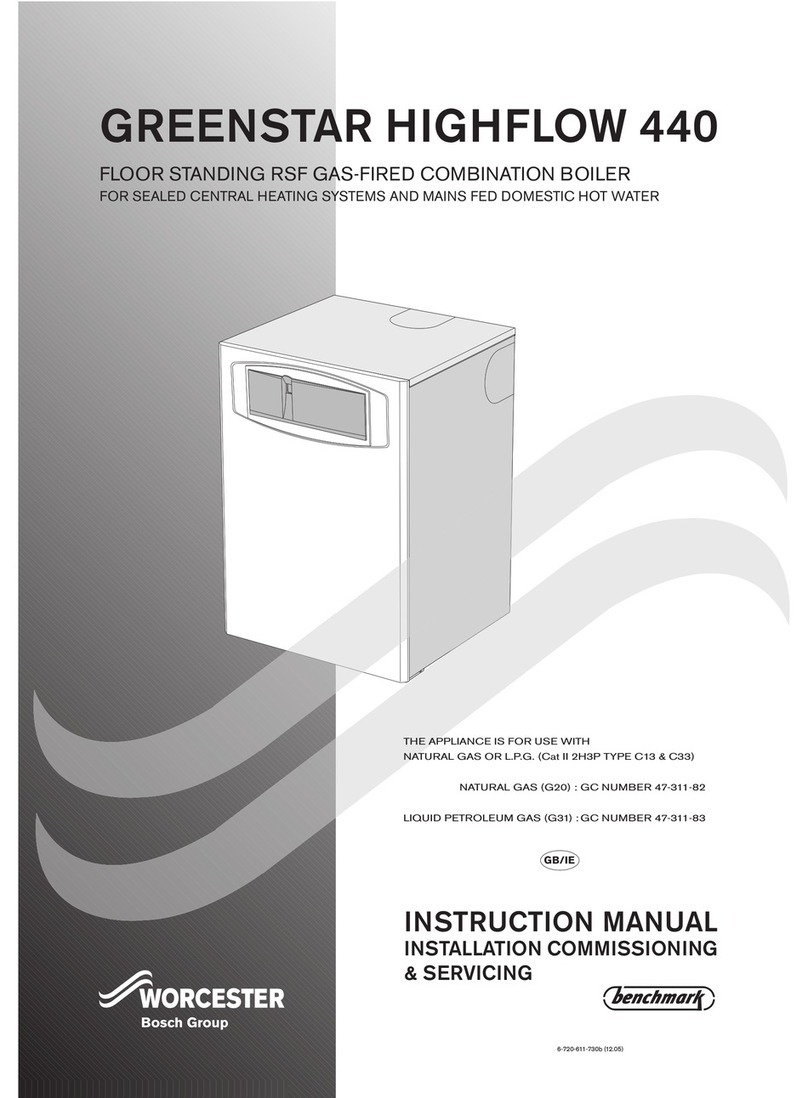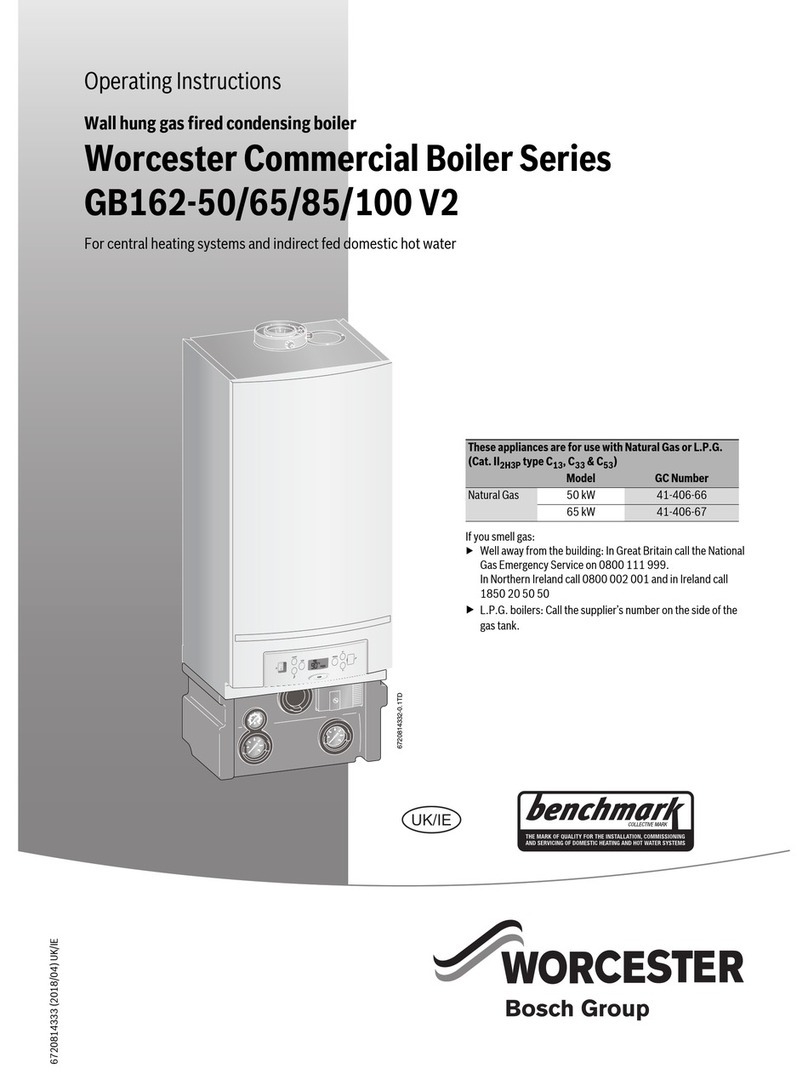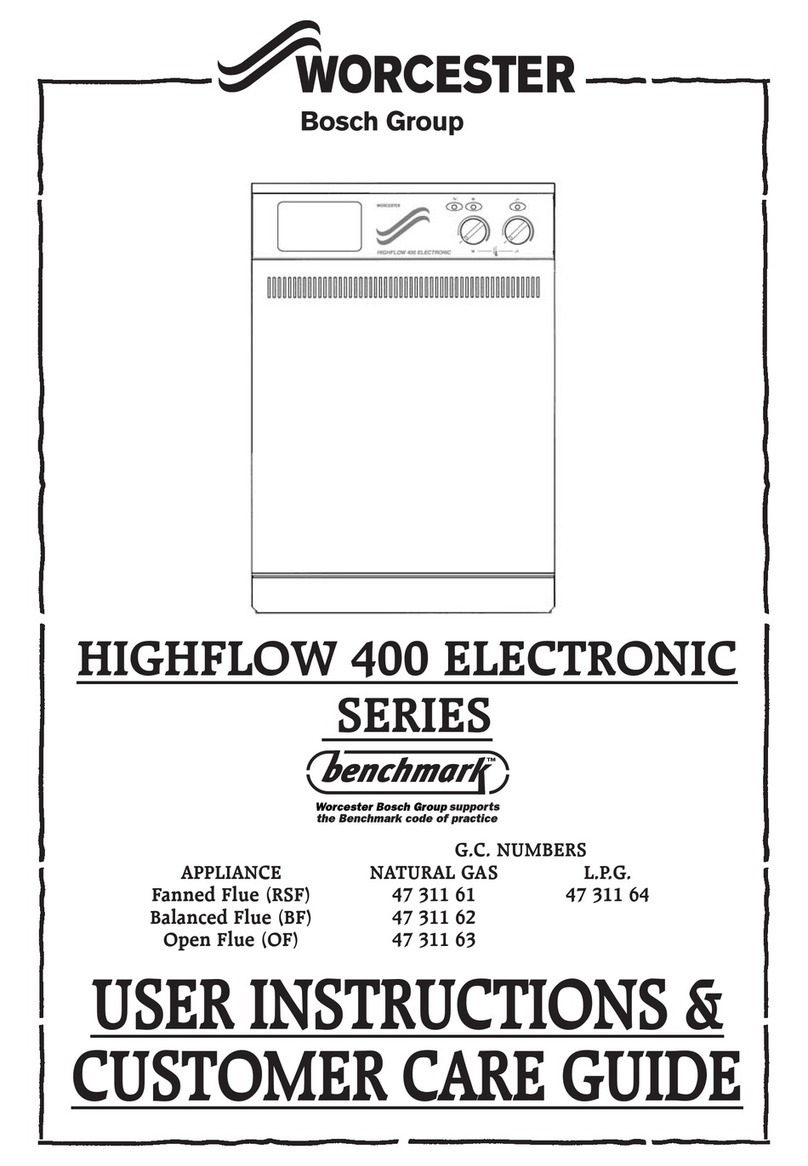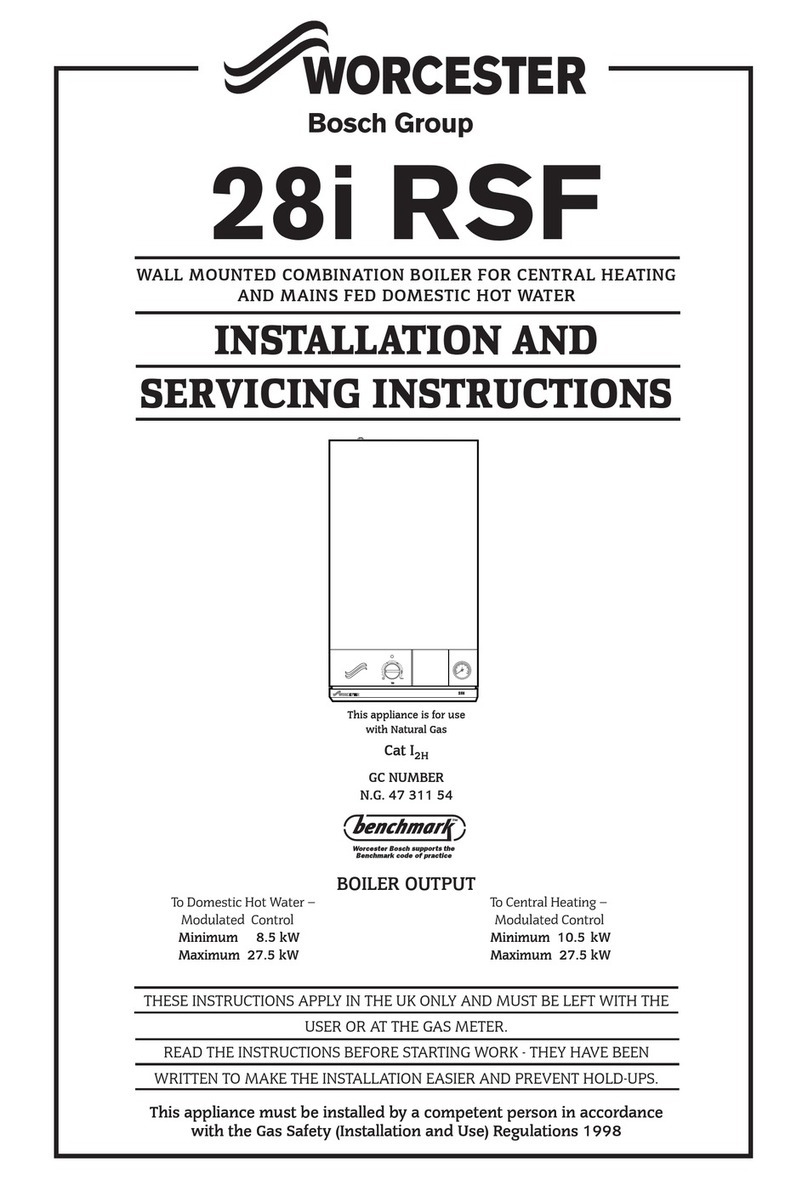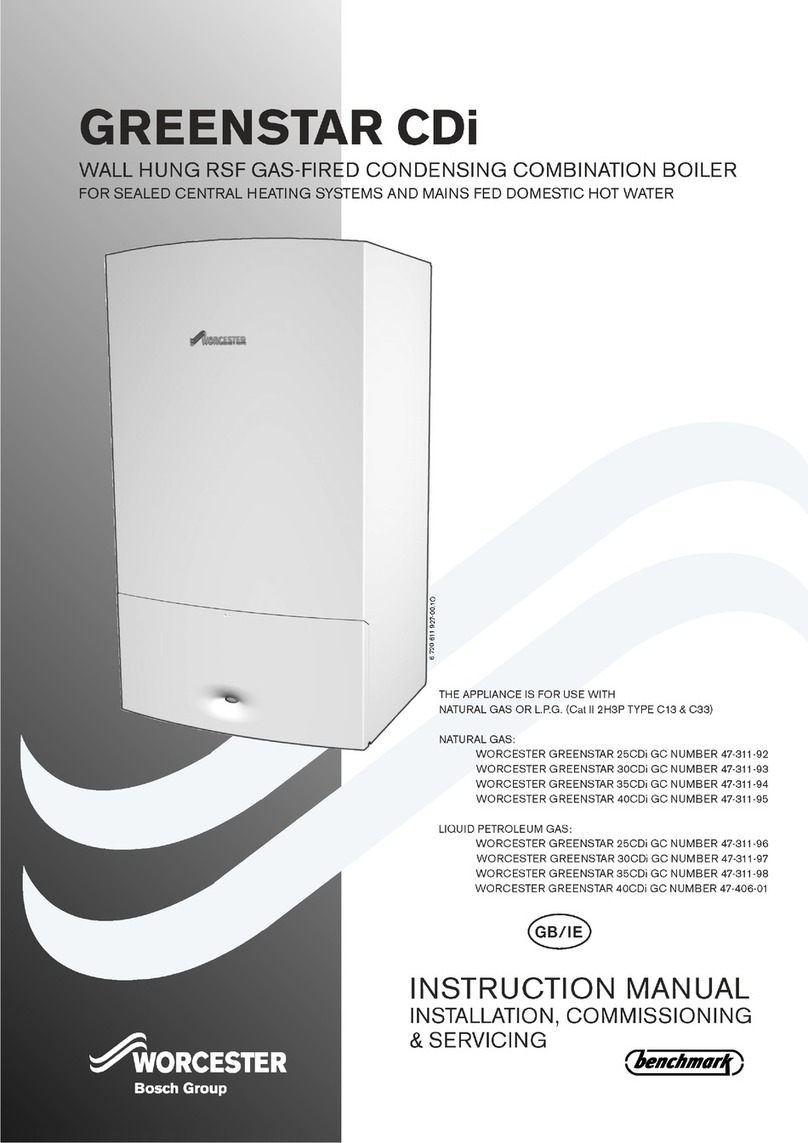4.1 The applian e is not suitable for external installation unless
a suitable en losure is provided.
4.2 The applian e should be positioned on a non- ombustible
solid base as near to the flue lo ation as possible. Care should be
taken to ensure that the applian e is level; use pa king at the
orners where ne essary.
4.3 When using a low level dis harge flue system the rear of the
applian e must be positioned against an external wall su h that
the flue terminal an safely dis harge the flue gases as des ribed
in Se tion 7.
4.4 The following learan es must be left to allow a ess for
installation and servi ing:
(a) Above 300mm
(b) In front - 600mm
( ) Right and left hand side – suffi ient for panel removal and
a ess to pipe onne tions where required.
See Fig. 2.
For installation and servi ing of the applian e the abinet should
be removed as follows:
5.1 Remove the abinet top panel by lifting squarely upwards to
release the four ball stud onne tions.
5.2 Remove the front panel by pulling the bottom of the panel
forwards to release the lower ball studs and then repeat the
pro edure at the top end to release the upper ones. Take are
not to pull the bottom end too far forwards as this may ause
damage to the spring lips.
5.3 The side panels are removed by firstly following pro edures
5.1 to 5.2 as des ribed above, then remove s rew (A) from the
side panel base and the three s rews lo ated in the upper flange
of ea h side panel. Ease the side panel lear of the ele tri al
ontrol box and slide forwards to release from the lo ating lugs
on the base plate.
5.4 The ontrol box an be removed by undoing the four s rews
in the front fa ia over and then removing the wing nut on the
underside of the ontrol box. The thermostat phials should be
arefully removed from the phial po kets and the ontrol box
pla ed in a safe pla e taking are not to kink the thermostat
apillary tubes.
6.1 In order to ensure lean and effi ient ombustion an
adequate supply of air must be delivered to the ombustion
hamber. To provide suffi ient air a suitable inlet should be
provided into the room or spa e in whi h the boiler is situated,
the sizes of whi h are shown in table 5. An air bri k or other
form of ontinuous air supply may have to be built into the
installation in order to ensure an adequate supply of air.
6.2 If the applian e is to be installed in a onfined spa e or
ompartment two air vents are required, one at high level and
one at low level. The minimum free area of ea h vent is given in
Table 6 and depends whether the air is taken from another room
or from outside the building. Where the air is taken from another
room that room must ontain an air inlet as des ribed in 6.1.
6.3 There must be suffi ient learan e around the applian e to
allow proper ir ulation of ventilation air. The learan es
required for Installation and Servi ing will normally be adequate
for ventilation. See Se tion 4.
A flue system must be provided in a ordan e with BS5410:Part
1 and the Building Regulations, Part J, Se tion J2.
The flue terminal must be lo ated in a suitable position as shown
in Fig. 5, su h that the produ ts of ombustion an be fully
dispersed without the possibility of the gases entering the
dwelling or that of a neighbouring dwelling.
7.1 Conventional Flue (See Fig. 3)
Conventional Flue Diameters:
50/70 125mm (5 in.) or 100mm (4 in.)
70/90 125mm (5 in.) or 100mm (4 in.)
90/110 125mm (5 in.)
The boiler is fitted with a onventional flue lo ating spigot. The
flue pipe fits into the spigot and should be orre tly sealed with
fire ement.
Note: The size of the flue must never be redu ed from that
spe ified above. An in rease in flue size is permissible provided
that the joint is sealed orre tly.
When installed the flue should be verti al and ontain as few
bends as possible. Where bends are ne essary, a maximum of
two are permitted and 135 degree bends should be used.
All bri k and masonry himneys should be lined with a suitable
non- ombustible material, properly jointed and able to
withstand the effe ts of the working temperature of the
applian e and any ondensate whi h may form.
7. Flue S stem
6. Air Suppl
5. Removal Of The Cabinet
4. Siting The Appliance
5
AREA OF AIR INLET
MODEL cm2in.2
50/70 105 16.5
70/90 138 21.5
90/110 176 27.5
Table 5. Minimum Combustion Air Inlet Free Area for
open flue appliances.
Fig. 3. Flue Installation.
Where possible take the
flue above the apex – if not
above the apex an anti
down-draught terminal is
advisable.
Brick Chimney.
Use of a flue liner
is recommended.
Use as few bends as
possible.
Use 135° Bends.
Flues must not be reduced from
the boiler take off diameter.
ALWAYS TAKE THE FLUE ABOVE THE EAVES
Table 6. Minimum Air Vent Free Area for Open Flue
appliances installe in a compartment.
Applian e Ventilation to room or Ventilation to outside
model internal spa e
High Level Low Level High Level Low Level
50/70 209 m2314 m2105 m2209 m2
70/90 275 m2413 m2138 m2275 m2
90/110 352 m2528 m2176 m2352 m2
